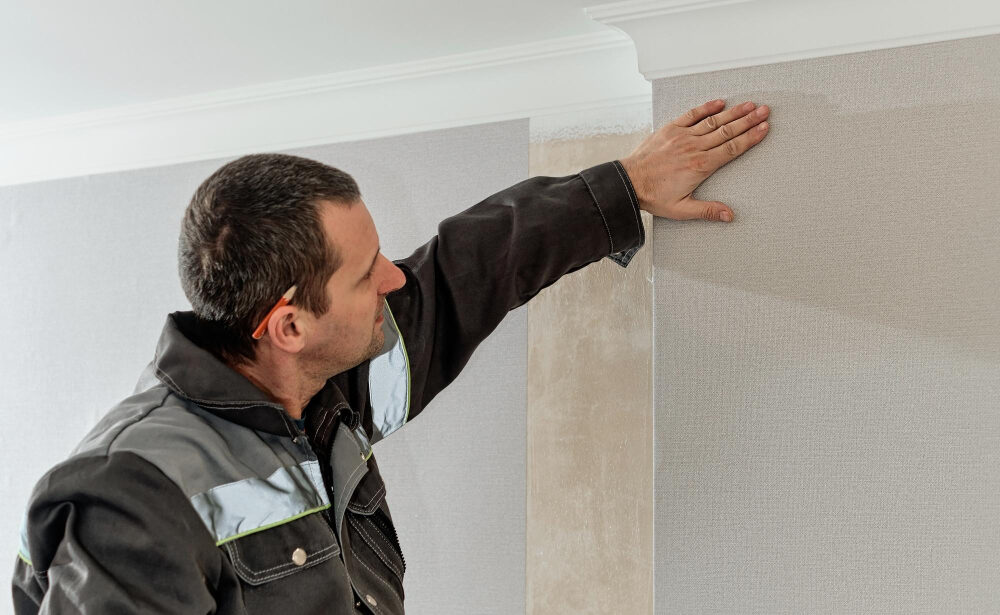Drywall corners take a beating. Whether it’s moving furniture, kids running around, or natural settling of your home, those corners are often the first places to crack, dent, or show wear. A damaged drywall corner doesn’t just look bad—it can worsen over time, leading to bigger problems if left alone. The good news? Drywall corner repair is absolutely doable for homeowners and DIY enthusiasts.
This guide will walk you through how to repair drywall corners, when to use a drywall corner repair kit, and even specific tips for drywall inside corner repair. By the end, you’ll know how to restore your walls to a clean, professional finish without breaking the bank.
Why Drywall Corners Get Damaged
Before grabbing your tools, it helps to understand why drywall corners fail. Common culprits include:
- Physical impact: Corners are high-traffic areas, especially in hallways, stairwells, and near doors.
- House settling: Over time, structural shifts create cracks at corners.
- Moisture exposure: Bathrooms and kitchens often see joint compound breakdown from humidity.
- Poor installation: A corner bead not properly attached can eventually pop loose.
Knowing the cause helps you choose the best repair method and prevent future damage.
Tools and Materials for Drywall Corner Repair
Here’s what you’ll need to make the job smooth and professional:
- Corner bead (metal, paper-faced metal, or vinyl)
- Drywall joint compound (a.k.a. “mud”)
- Drywall tape (paper or mesh, if needed)
- Drywall knives (6-inch and 10-inch)
- Sandpaper (120–220 grit) or sanding sponge
- Utility knife
- Drywall screws and screwdriver/drill (for metal beads)
- Drywall primer and paint
- Drop cloth and safety gear (mask, gloves)
Pro tip: If you’re new to drywall work, consider buying a drywall corner repair kit. These kits usually include a pre-formed corner patch, joint compound, and tape—saving you from buying everything separately.
Step-by-Step: How to Repair Drywall Corners
Step 1: Prep the Area
- Cut away loose joint compound, peeling tape, or broken corner bead with a utility knife.
- Lightly sand rough edges.
- Wipe the surface clean with a damp cloth to remove dust.
Step 2: Replace or Reinforce the Corner Bead
The corner bead is the backbone of your corner. If it’s loose or damaged, you’ll need to replace it.
- Metal bead: Toughest option, great for high-traffic spots. Attach with screws every 8–10 inches.
- Paper-faced metal bead: Easy for DIY use—just embed in joint compound.
- Vinyl bead: Flexible and moisture-resistant, good for bathrooms or basements.
Make sure the bead sits flush with both walls before moving on.
Step 3: Apply Joint Compound and Tape
- Apply a thin layer of compound along both sides of the bead with a 6-inch knife.
- If your bead doesn’t have paper facing, press drywall tape into the wet compound.
- Smooth out bubbles and wrinkles.
After drying (about 24 hours), apply a wider second coat using a 10-inch knife, feathering the edges. Add a third thin coat if needed for a seamless transition.
Step 4: Sand Smooth
- Use fine-grit sandpaper to smooth the dried compound.
- Run your hand along the surface to check for bumps.
- Wipe away dust with a damp cloth.
Step 5: Prime and Paint
- Apply primer to seal the compound.
- Finish with two coats of matching paint.
- Blend edges carefully for an invisible repair.
Drywall Inside Corner Repair
- Repairing an inside drywall corner (where two walls meet) is slightly different:
- Cut away loose or bubbling tape.
- Apply fresh compound with a 6-inch knife.
- Fold new paper drywall tape down the middle and press it into the corner.
- Smooth both sides outward to remove bubbles.
- Once dry, add two more thin coats, feathering each layer further out.
- Sand carefully, prime, and paint.
Using paper tape is best for inside corners since mesh tape doesn’t hold as well in that sharp angle.
Using a Drywall Corner Repair Kit
For homeowners who don’t want to gather separate tools, a drywall corner repair kit can be a game-changer. These kits typically include:
- Preformed corner patch or corner bead
- Joint compound
- Tape
- Sanding pad
They’re especially handy for smaller repairs or for people without drywall experience. While kits may cost slightly more than buying raw materials, they save time and simplify the process.
Cost of Drywall Corner Repair
DIY drywall corner repair is affordable:
- Corner bead: $5–$15
- Joint compound: $8–$20
- Drywall tape: $3–$7
- Sandpaper: $5–$10
- Primer & paint: $20–$40
DIY total: $30–$100 depending on what you already own.
Hiring a pro: $150–$400 for one corner, depending on damage.
Common Mistakes to Avoid
- Applying compound too thickly—it cracks and takes forever to dry.
- Skipping primer before painting.
- Rushing drying times (always wait 24 hours unless using quick-set).
- Over-sanding, which can damage the corner bead underneath.
- Ignoring moisture issues that caused the damage in the first place.
Tips to Prevent Future Drywall Corner Damage
- Install corner guards in high-traffic areas.
- Control indoor humidity levels.
- Handle furniture carefully near walls.
- Inspect corners annually for early signs of cracking.
FAQs About Drywall Corner Repair
Can I repair a drywall corner without replacing the bead?
Yes, for small dents or cracks. Use joint compound or caulk for quick touch-ups. But if the bead is loose or rusted, replacement is best.
What’s better: paper tape or mesh tape for corners?
Paper tape is stronger for inside corners. Mesh tape can work on flat seams but isn’t ideal for sharp angles.
Can I do drywall inside corner repair without sanding?
You can use a damp sponge to smooth the compound while wet, but sanding gives the cleanest finish.
Is a drywall corner repair kit worth it?
Yes, especially if you’re only repairing one or two corners and don’t own the tools. It’s convenient and beginner-friendly.
How long does the repair take from start to finish?
Usually 2–3 days, accounting for drying time between coats of joint compound.
Conclusion
Drywall corner repair may look intimidating, but with the right tools and a little patience, you can restore damaged corners to look brand new. Whether you’re fixing a dent, tackling a drywall inside corner repair, or using a drywall corner repair kit for convenience, the steps are straightforward.
The key is preparation—remove all loose material, use thin layers of compound, allow proper drying, and sand carefully. With these methods, your drywall corners will stay smooth, strong, and durable for years to come.
If you’re ready to give your walls a facelift, grab your tools (or a repair kit) and get started today.

